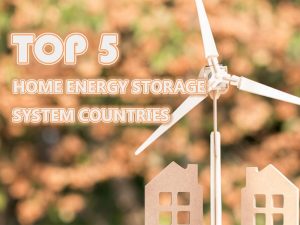Profitability of lithium battery energy storage products

So, what is the profit margin of lithium battery energy storage products? We might as well analyze the real profits of lithium battery energy storage systems through the semi-annual report data of some listed companies.
Gross profit margin of energy storage products of listed companies
On August 23, CATL, ranks first in top 10 lithium ion battery manufacturers, released its report for the first half of 2022. The energy storage system business achieved sales revenue of over 12.7 billion RMB, a year-on-year increase of 171.41%. The energy storage business already accounted for 11% of CATL’s total revenue in the first half of the year.
However, in sharp contrast to the rapid growth in performance, the gross profit margin of CATL’s energy storage business has gone to the other end.
In the first half of 2021, the gross profit margin of its energy storage business was 36.6%. For the whole of last year, although the gross profit margin of the energy storage business decreased, it also reached 28.52%. In the first half of 2022, the gross profit margin of the energy storage business plummeted to 6.43%, down nearly 30 percentage points year-on-year, which can be described as a disaster.
On August 26, Sungrow, one of top 10 pv inverter companies in the world, released its report for the first half of 2022. The revenue of the energy storage industry was 2.386 billion RMB, a year-on-year increase of 159.33%, accounting for 19.42% of the total revenue in the first half of the year.
However, the gross profit margin of the energy storage system was only 18.37%, down 2.86% year-on-year, and was significantly lower than the gross profit margin of the company’s main business, photovoltaic inverters, which lowered the company’s overall profitability.
On August 26, as the leader of the second echelon of Chinese power battery manufacturers, Guoxuan Hi-Tech Power Energy Co., Ltd. released its 2022 semi-annual report. The energy storage battery business was disclosed for the first time in the financial report.
In the current period, the operating income was 1.279 billion RMB, accounting for 14.8% of the total operating income, but the gross profit margin was only 10.24%, which dragged down the company’s gross profit margin as a whole.
On August 30, Narada Power released its semi-annual report. In the first half of 2022, the company achieved a total operating income of RMB 5.635 billion, a year-on-year decrease of 14.6%; net profit attributable to the parent was RMB 529 million, a year-on-year increase of 1323.3%; earnings per share were 0.61 RMB.
Among them, the power storage business achieved operating income of 407 million RMB, a year-on-year increase of 25.06%, and a gross profit margin of 15.7%, a year-on-year decrease of 7.59 percentage points.
On August 26, PYLONTECH, one of top 10 powerwall manufacturers for home energy storage in the world, announced its 2022 semi-annual report. The company achieved revenue of 1.854 billion RMB, a year-on-year increase of 171.94%, and a gross profit margin of 29.01%, a year-on-year decrease of 7.93 percentage points.
The gross profit margin of energy storage products of the above companies in the first half of 2022 is summarized as follows:
| Company name | CATL | Sungrow | Guoxuan Hi-tech | Narada | PYLONTECH |
| Gross profit margin of energy storage | 6.43% | 18.37% | 10.24% | 15.70% | 29.01% |
Except for Pylontech, the gross profit margins of several other companies are all below 20%, and all of them have experienced varying degrees of decline.
Profitability of lithium battery energy storage systems
Since the first half of last year, the prices of all raw materials upstream of lithium batteries have risen to varying degrees. The price of battery-grade lithium carbonate once soared from 50,000 RMB/ton to 500,000 RMB/ton, an increase of nearly 10 times.
The price of anode graphite increased by more than 100% year-on-year, and the price of electrolyte once increased by more than 200%, and it did not start to gradually decline until April.
The market price of lithium hexafluorophosphate rose all the way from August 2020 to 90,000 RMB / ton on March 2, 2022, and continued to rise for 19 months, with an increase of 748.92%.
From the perspective of the cost structure of the energy storage system, the battery cost accounts for the highest proportion, reaching 60%. Therefore, the substantial increase in the cost of batteries will inevitably lead to a substantial increase in the cost of the energy storage system.
Under the background of rising raw material prices, even a strong company such as CATL cannot avoid the dilemma of increasing revenue without increasing profits. The cost pressure of other lithium battery companies can be imagined.
For lithium battery companies that have invested in upstream raw materials, the decline in gross profit margin will be smaller, and the profit reduction of downstream batteries and systems can be offset by the increase in upstream material profits.
And many second- and third-tier battery companies and system integration companies can do nothing about it.Let’s take a look at the market price of lithium battery energy storage systems.
In the first half of 2022, according to the announced results of energy storage equipment procurement (including centralized procurement, framework procurement) or EPC general contracting for 63 lithium battery energy storage projects, the total scale of energy storage projects involved is nearly 4.02GW/7.92GWh.
The average winning price of the energy storage system can be calculated: the average price of the 0.5C energy storage system is 1.62RMB/Wh; the average price of the 1C energy storage system is 1.84RMB/Wh. The winning bid price has gradually declined since the middle of the year.
Huadian Group opened the bid for a 1.4GWh energy storage system in August. The average winning price of the first bid was 1.43RMB/Wh, and the average bid price of the second bid was 1.48RMB/Wh.
As most of China’s large-scale terminal energy storage power stations adopt the form of centralized procurement bidding, there are many enterprises participating in the bidding, and the price competition of energy storage systems is very fierce.
It is far from enough to cover the increase of more than 100% or even several times more than the cell material. Most cost pressures are absorbed by lithium battery companies and system integrators themselves, resulting in a rapid decline in gross profit margins and meager product profits.
Among the several listed companies we analyzed, only PYLONTECH’s gross profit margin has maintained a high level, although it is also affected by the rising cost of cell raw materials.
However, the company’s business mainly comes from other countries. Benefiting from the conflict between Russia and Ukraine and the power shortage in Europe, Sales revenue in other countries increased rapidly in the first half of 2022, reaching 1.738 billion RMB, accounting for 93.77% of revenue.
The prices of energy storage products in other countries are relatively high, and PYLONTECH can transfer the pressure of rising costs to downstream customers to a certain extent, without causing a sharp decline in gross profit margins.
For a long period of time in the future, the cost of battery cell materials and the price of China’s energy storage market will remain relatively stable, and the low profit of energy storage systems will not be greatly improved. If companies want to gain more profits, they must enter developed countries and share the dividends of the global energy storage market.
Electrochemical energy storage industry will develop rapidly
As of 2021, the cumulative installed capacity of electrochemical energy storage in China will account for 11.8%, corresponding to an installed capacity of 5.12GW. At the end of the “14th Five-Year Plan” period, the cumulative operational scale of electrochemical energy storage is expected to exceed 60GW, and the newly installed capacity will exceed 55GW/110GWh.
It will strongly support the continuous increase in the proportion of renewable energy power generation and achieve the carbon emission target during the 14th Five-Year Plan period.
The electrochemical energy storage industry will usher in explosive growth in the next few years, and will drive the rapid development of the upstream and downstream industry chains, boosting the scale of China’s energy storage market and bringing strong economic benefits.




























